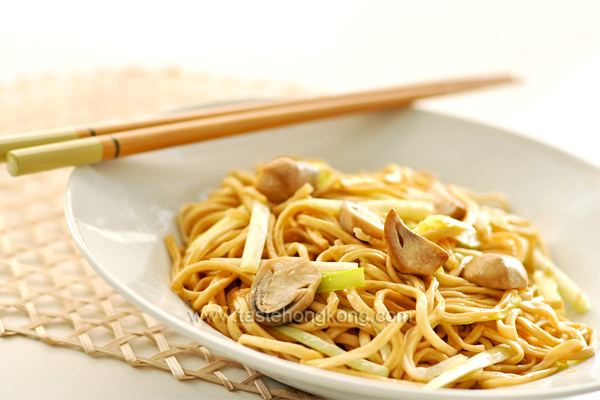
When Chinese dishes are named in English, I sometimes see surprises. Calling this Teriyaki Noodles is one interesting example. Here, I must admit I’m not innovative enough to go after that, thus this common name.
Like its traditional cousin – stir-fried noodles, these braised noodles are cooked by the very similar actions of stirring and turning, but emphasizing on reaching a critical moment that the sauce is precisely dried and that the noodles are still springy. Therefore sometimes it is also translated as Dry-Fried E-Fu Noodles or Dry-Fried Yi Mein. Whichever the translation is, in Chinese, the e-fu noodles cooked in this way is called 干燒伊麵.
That precise moment indeed vanished pretty quickly. While having all the sauce thoroughly coated the noodles but without scorching, I missed taking a snapshot of frying them in wok.
Braised E-Fu Noodles is a classic dish often served in Chinese banquets and formal dinners because since the older days they have been regarded as quality noodles, quality fried egg noodles to be specific. But the noodles used for this recipe, resembling a nest texture in patty shape as pictured below, only costs me about HK$10.
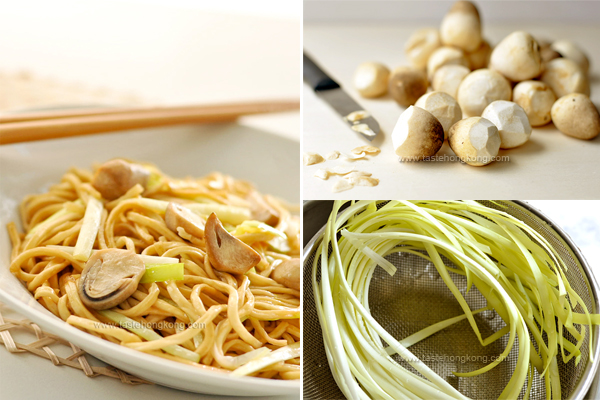
- Ingredients
- 200g e-fu noodles
- 150g yellow chives
- 150g fresh straw mushrooms
- 2 cloves garlic, finely chopped
- 1/2 tsp cooking wine
- 1 tbsp oil for frying
- Sauce
- 1 1/2 tbsp oyster sauce
- 2 tsp soy sauce
- 1/4 tsp salt (or to taste, because saltiness of oyster sauce varies)
- 1/2 tsp sugar
- 1/4 tsp sesame oil
- 1/8 tsp ground white pepper
- 1/2 cup stock or water
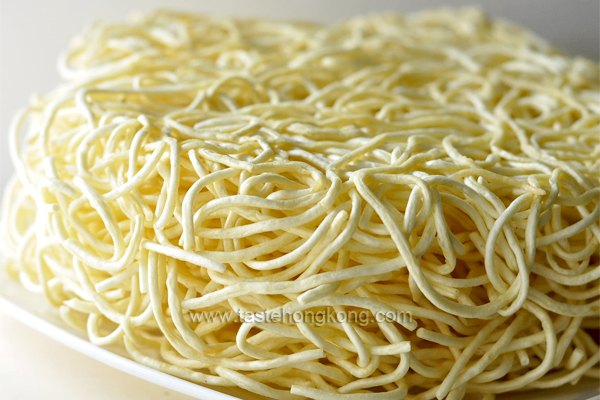
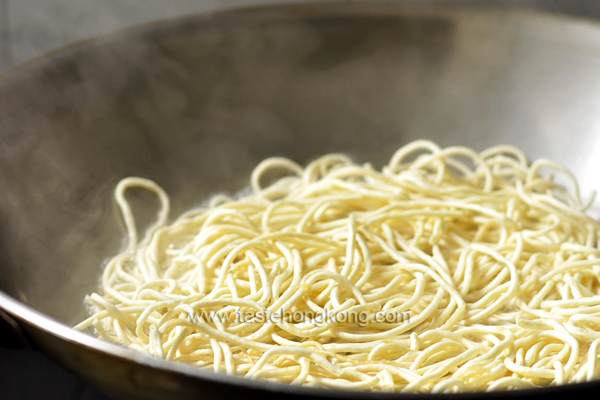
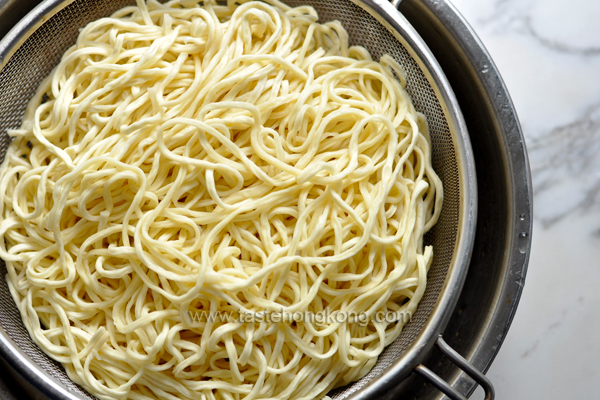
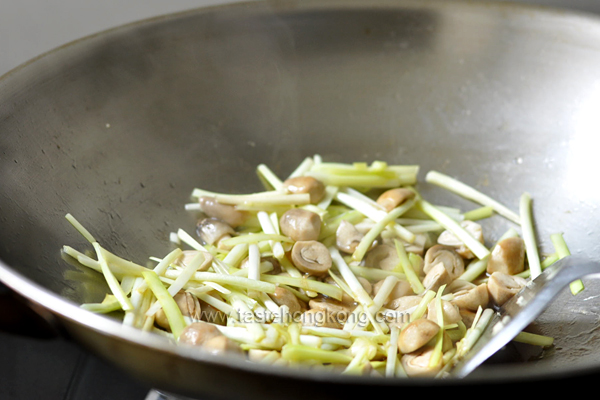
Method
Wash yellow chives clean, drain dry and cut into about 4cm length.
Briefly rinse straw mushrooms, pat dry and peel off any bruised skins. Depending on the size of your liking, half or quarter each.
Bring about 4 cups of water in the wok to a boil. Blanch noodles in the boiling water over high heat until just softened, roughly half to one minute.
Immediately transfer the noodles to a colander and rinse them under running cold water. Drain dry (shake and turn the noodles in the colander a couple of times to get rid of excess water). Meanwhile, have the sauce mixed well with you.
Discard water in the wok and wipe dry. Heat oil over medium flame, sauté garlic, toss in straw mushrooms and stir-fry them until lightly brown, about half to one minute. Add yellow chives, sprinkle wine on side of the wok and give a few quick stirs (I like the chives remain crunch even toward the end). Push them to one side of the wok. Or, dish up first.
Pour in mixed sauce in the center of wok. Bring it to a simmer, then put in noodles and combine them with chives and mushrooms. You need to constantly flip and turn them to avoid sticking to the wok. Stir well and until all the sauce is evenly coated to the noodles.
Dish up and serve hot. I also like serving it with chili sauce.
Enjoy!
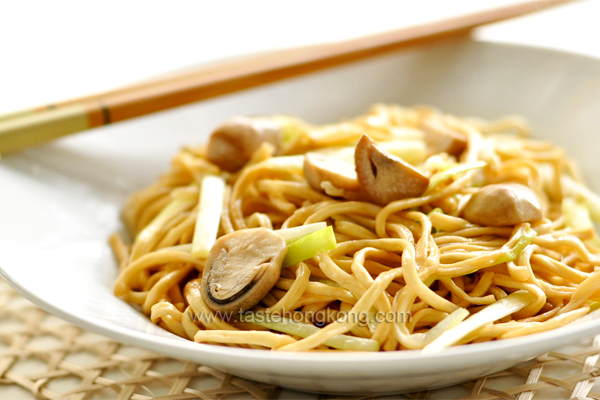
Note
Scissor the noodles in their middle before braising if you find them strangled together or too long for stirring.
Fresh straw mushrooms usually come with an earthy smell. When it is too strong for you, blanch mushrooms first and drain them dry before cooking.
- Category: Featured . Mushroom and Fungus . Noodle .
- 32 comments
To get immediate updates and new recipes from my blog, you may also SUBSCRIBE them via RSS feeds. See you there.
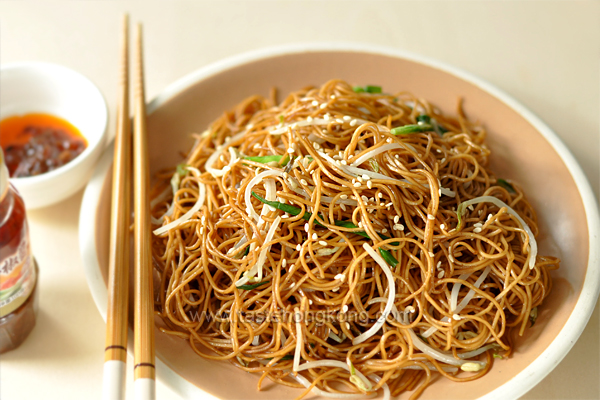
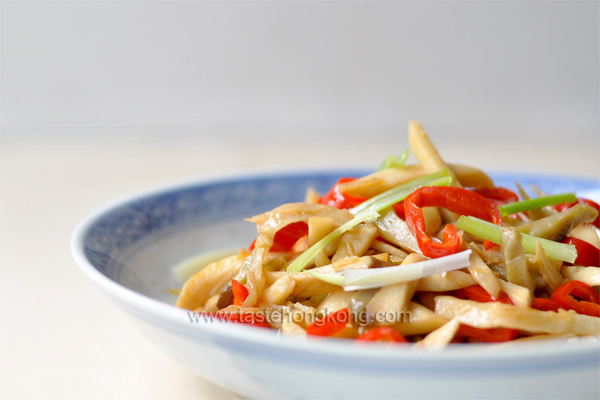
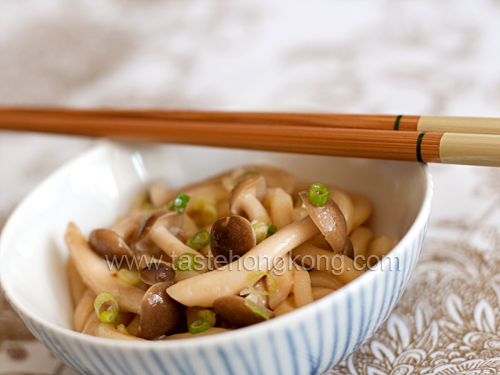
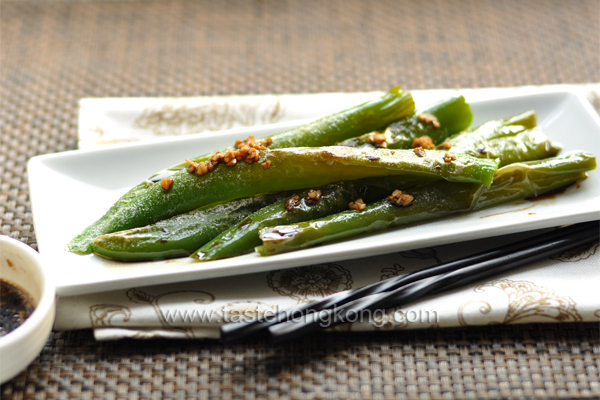
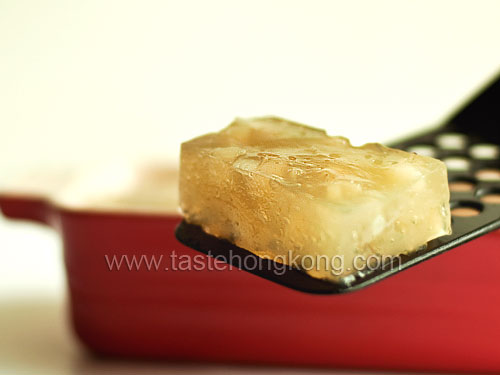
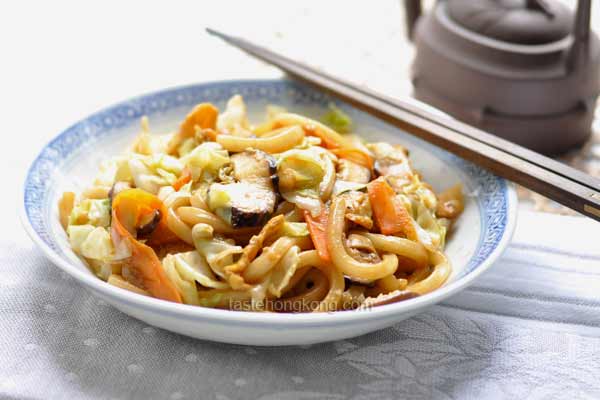
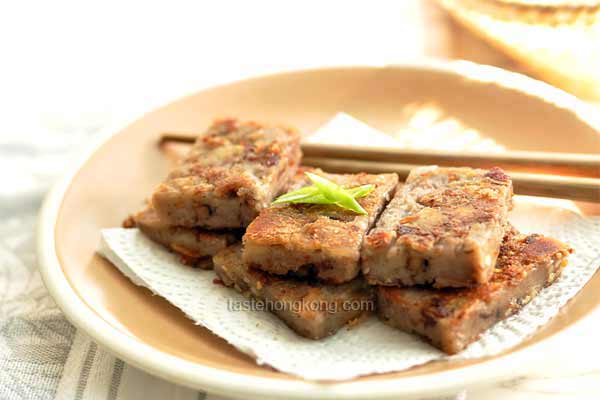
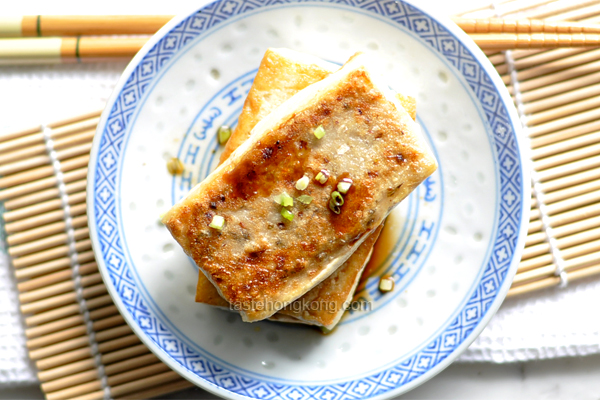
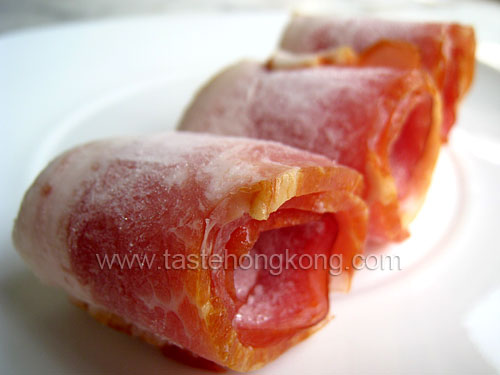
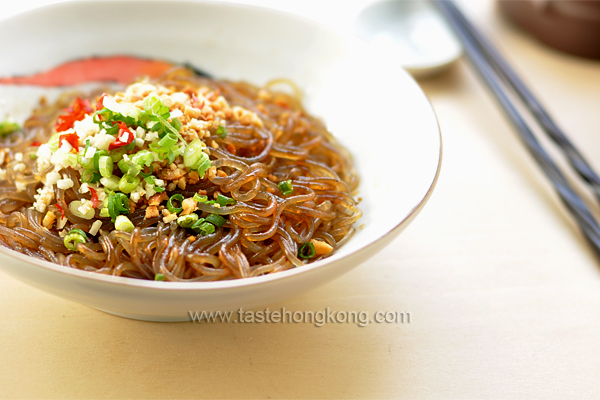



I love the texture of this noddles…but have to admit that never made it at home…yours look so good…and great pictures as usual.
Hope you are having a great week 🙂
I have not see fresh straw mushroom before. I’ll just use the one in can.
Ee Fu noodle is flavorful. Like the simple way you cook it.
I love EFU noodles! Yours look exactly like the one served on 5-star hotel restaurants!
Woohoo, 干燒伊麵 is one of my favourite noodles! The presentation of your dish gives a fresh and inviting look. Love it.
I enjoy 干燒伊麵 too! And I have not seen fresh straw mushrooms being sold here. The taste of fresh straw mushrooms giving many more plus point to this noodle dish 🙂
I was just craving ee fu noodles the other day! Thanks for sharing your delicious recipe 🙂
Lovely noodles! I always have difficulty in telling if I have enough water while braising the noodles. Sometimes they turn out to be too soggy, other times undercooked.
This is perfect for vegetarian-style lunch.
I love these noodles!! Thank you for sharing the technique. I have to try your recipe and perfect it! Looks absolutely delicious.
I have just eaten a plate of fried noodles….so full now. Otherwise I would be hungry and drooling over yours 😀 Yours look simple and delicious. My family will eat this anytime. They are great noodle lovers.
Only had braised e-fu noodle during weddings. Can’t wait to try this recipe. Thanks.
i love this too! always prefer these ee fu noodles to the normal yellow noodles..!
Very interesting technique and info about these noodles! The recipe looks delicious!
– Brittany
I love straw mushrooms. I like to use them in stir frys and at times, soup
Lovely!! I really love braised noodles and it’s really a simple kind of meal that I will never hesitate to make.
look really great. will make for sure, esp. since right near Chinatown. Thanks.
Sometimes I think we like to call anything with any bit of Asian flare, Teriyaki, in English. Ha, ha! These look delicious. We just love straw mushrooms, but don’t find them here. I need to frequent our Asian market here more often to see if they might get them in.
@Lori,
Ha! I could understand the differences. Sometimes we also categorize foods as Western.
On our menu, teriyaki is usually a Japanese style dish.
Good luck, and enjoy shopping!
I’ve just come across your blog and absolutely love it. Your photography is beautiful. These noodles sound delicious, I need to get to an Asian supermarket in London to see if I can find the ingredients!
@Claire,
Thanks for your kind words.
Wish you could get all the ingredients in your next shopping; probably in locations where you find more Chinese foods. Good luck!
Just wanted to let you know that I tried this recipe last night and it came out perfect–exactly like how it’s done at my favorite restaurants. I made one small substitution: fresh shiitake mushrooms instead of straw. Thanks for sharing. Check out my blog if you have time.
@Roger,
Your substitution sounds great! Glad to know that this can be comparable to your favorites.
I’m going to visit your blog soon.
This is the dish that my sister and I would take seconds from during a wedding banquet! I’ll be bookmarkign this (:
This recipe looks delish! Can’t wait to try it!
I just need some help! I’ve tried (and failed) to cook e-fu noodles and I must be doing something terribly wrong. My noodles come out a spongy, soggy weird texture, nothing like what I have at restaurants. The only noodles I know of to buy at the Chinese market (99 Ranch) is the one that is dried in a round packaging. Is that the right kind? Is it possible I am boiling the noodles too long? I don’t know what to do! Please Help! Can you possible post a picture of the noodles you use? I’m so frustrated that I can’t make this simple yet uber delicious meal!
@Jen,
Slightly overcooked, these noodles may easily turn soggy. I believe you are not the only one experienced such. That is why I suggested in the above ‘ …emphasizing on reaching a critical moment that the sauce is precisely dried and that the noodles are still springy …that precise moment indeed vanished pretty quickly …’ And, in the steps, ‘ …blanch noodles … until just soften … immediately transfer the noodles to a colander and rinse them under running cold water…’.
Perhaps you may want to experiment with a portion of the noodles and sauce first. It should be easier to handle a smaller amount while you also need to work fast with in some steps, like fishing out noodles from hot water and frying them to just cooked.
As for the noodles, the one I bought didn’t come with any labeling or packaging. It resembled a nest texture in patty shape (as above) and was wrapped in cling film.
Enjoy soon!
Hi Jen. The noodles I use are made by Golden World Food Co. They come dried and package in large round cakes, two to a 12 oz package. The cakes are very large and difficult to handle in a wok. In order to soften the noodles within the 1-2 minute time frame, you need to be stirring constantly and flipping the cake around to make sure all sides are in contact with the boiling water. Hope this helps.
– Roger
Thank You both for the tips! I can’t wait to make it!
Ooh I love ee-fu noodles! Am going to try your recipe! I can’t believe I have only just found your site – it’s amazing and beautiful. Definitely a keeper on my blogroll.
@Camemberu,
Thanks, and hope you will soon enjoy this. Also thanks for the link, I really appreciate it!
[…] tastehongkong.com has some info about the noodle dish (and a recipe): […]
Hi, every time I tried ur recipe, ur recipe won’t disappoint me. I cooked the noodles tonite and it was so easy and nice. I replaced the mushroom with shimeiji and the chives with scallions as I don’t have the ingredients u mentioned. It still taste good! I am happy that you shared the tips of blanching the mushrooms to remove the raw taste. It works! Now I won’t be afraid of adding mushrooms into my dish. Thanks!
@yi xuan,
Great! Thanks for sharing.
[…] http://www.tastehongkong.com/recipes/braised-e-fu-noodles-with-straw-mushrooms/ […]